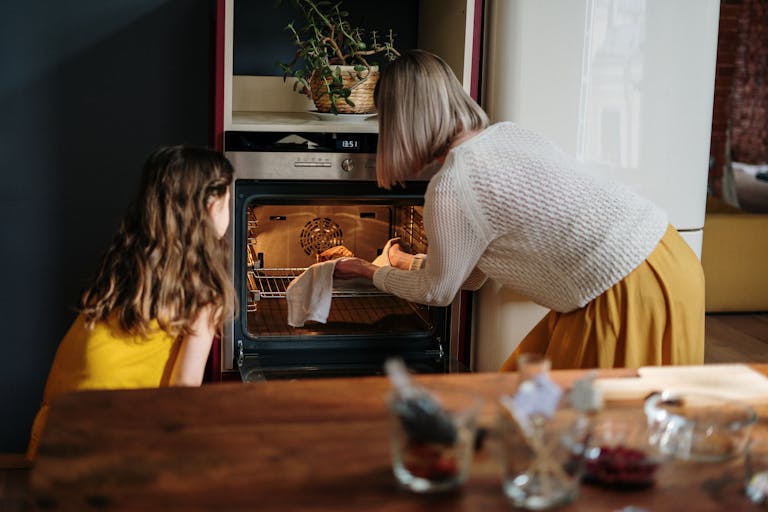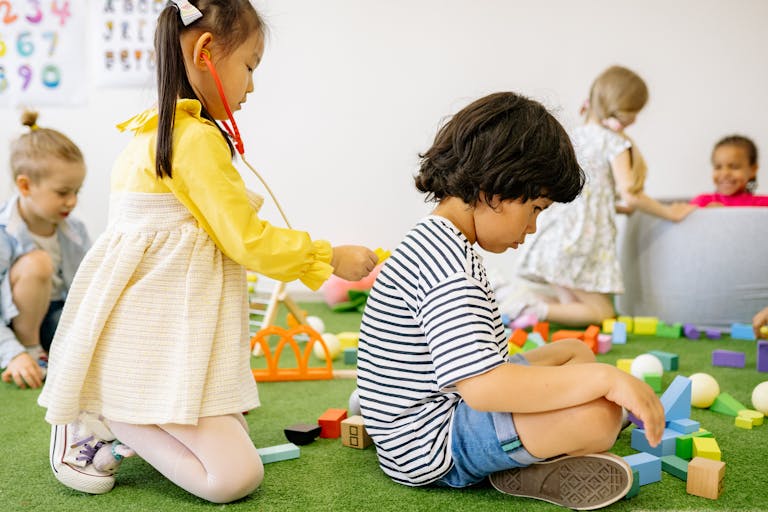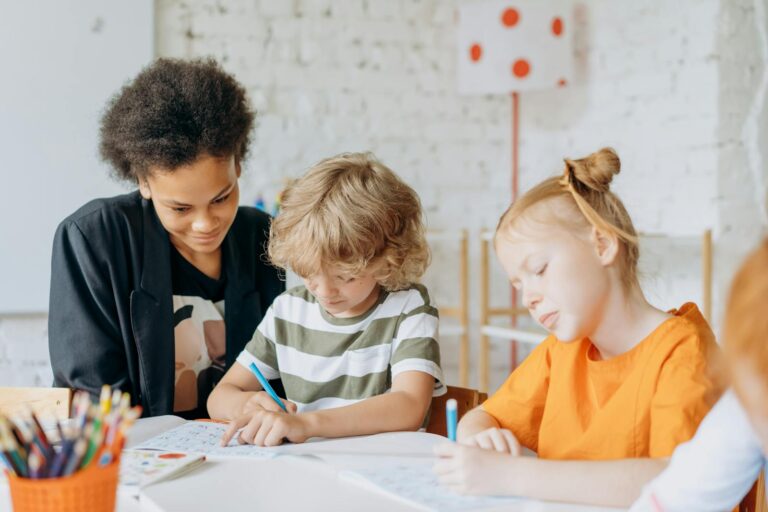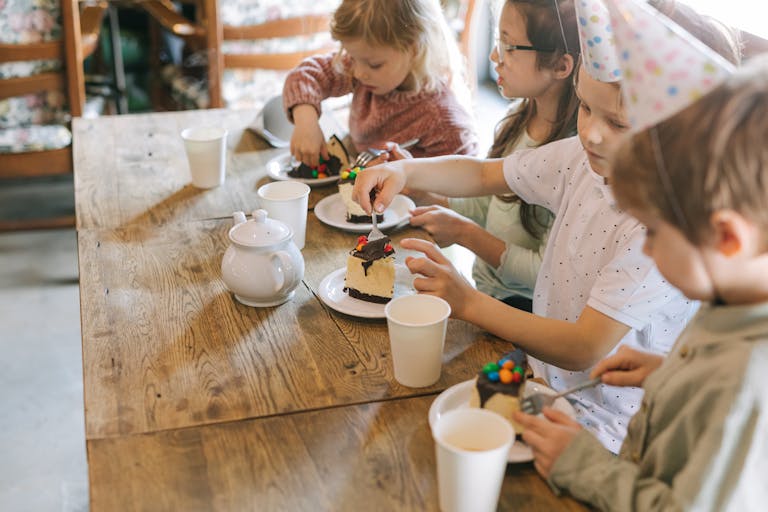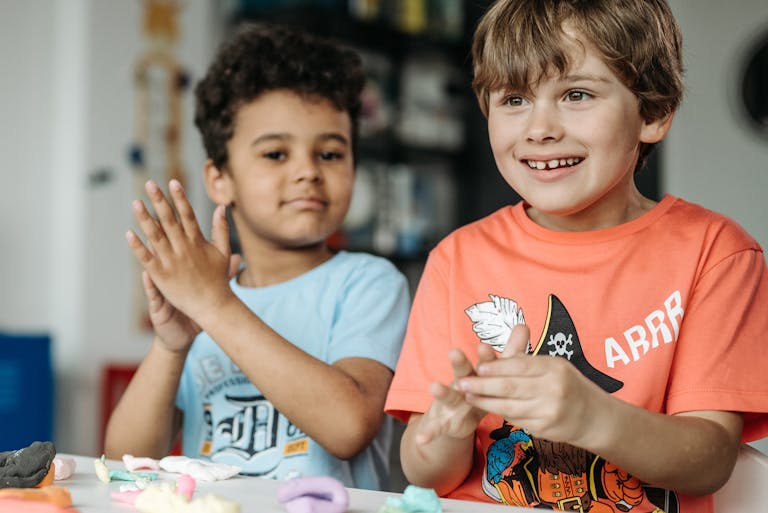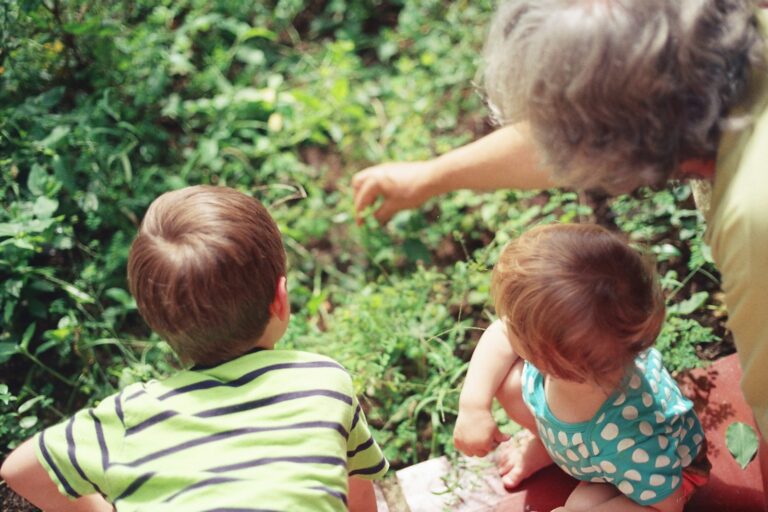Sensory Play and Storytelling: Helping Little Minds Grow
When I think back to my own five little ducks, my grandkids—I remember moments like watching them squish playdough between their fingers, stir pretend soup in the play kitchen, or walk barefoot through the grass on a warm day. What might seem like just fun and games is actually a big part of how young children learn.
What Is Sensory Play?
Sensory play is any activity that gets little ones using their senses, touch, smell, taste, sight, hearing, and even movement and balance. It’s how children explore their world. It’s how they learn.
When children scoop and pour water, roll playdough, or dance to music, they’re building skills in ways that feel natural and joyful. As a retired preschool teacher and grandma, I’ve seen it time and time again, when we let kids play with their senses, we’re helping them grow in every way.
Why Sensory Play Matters
Let’s look at how sensory play supports early childhood development:
Thinking & Learning (Cognitive Skills)
Sensory play helps the brain grow by building strong neural connections. Children start figuring things out, asking questions, and solving problems through play.
Talking & Listening (Language Skills)
Give a child a soft feather or a crunchy leaf and the words come flying: “It’s tickly!” “It’s rough!” Sensory play encourages kids to describe what they feel, building vocabulary and confidence.
Getting Along With Others (Social-Emotional Skills)
Sharing sensory bins or dancing together teaches patience, turn-taking, and managing big feelings.
Using Their Bodies (Fine & Gross Motor Skills)
Scooping, pouring, painting, and climbing all help strengthen both small and large muscles. This is mportant for everything from writing to running.
Being Creative and Curious (Imagination & Problem Solving)
With sensory play, children invent their own games and solutions. Their creativity blossoms.

Easy Sensory Play Ideas
You don’t need fancy supplies. Here are simple ideas that work in any home or classroom:
- Water Play: Use cups, ladles, and small toys in a tub or sink.
- Sand or Rice Bins: Add funnels, spoons, and hidden objects to find.
- Playdough Fun: Press in buttons, leaves, or cookie cutters.
- Nature Walks: Collect rocks, leaves, or acorns; feel tree bark and listen to birds.
- Cooking Together: Let kids measure, pour, and taste.
- Music and Movement: Turn up the music and get moving!
A Little Storytime Magic
One rainy afternoon, I read a book about storms with my preschoolers. But we didn’t just read, we acted it out. We tapped our fingers for raindrops, shook plastic eggs to sound like thunder, and twirled scarves like the wind. That story came to life, and every child was a part of it.
Sensory play and storytelling go hand-in-hand. When we combine a good book with movement, texture, sound, and even smell, children understand and remember more. They feel part of the story.
Want to dig deeper? Check out this sensory learning research from Zero to Three.
What we know!
Sensory play isn’t just fun, it helps children grow smarter, kinder, stronger, and more curious. Whether you’re a teacher, parent, or grandparent, you’re helping children learn every time you offer them a chance to explore and play with their senses.
So grab some playdough, turn up the music, or just go outside and touch the leaves. You’re building their brains—and creating beautiful memories, too.


